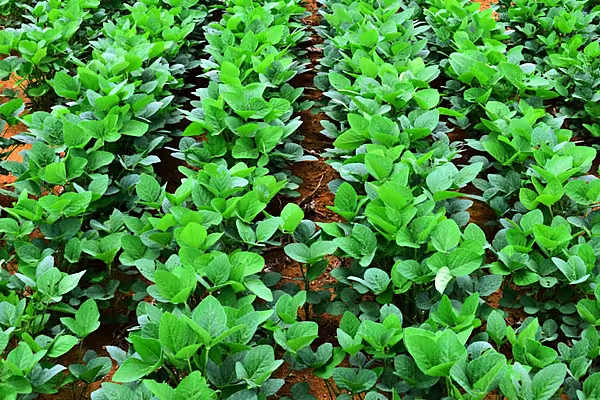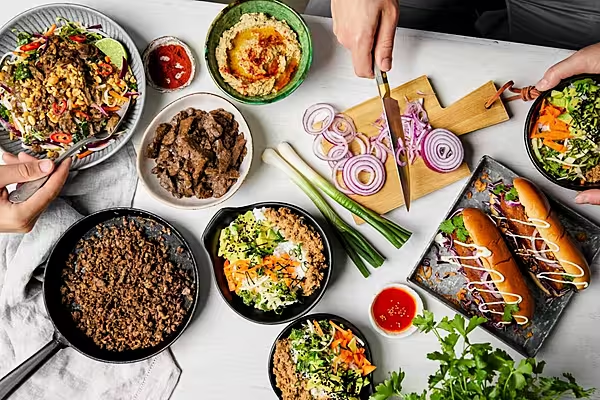At a time when people around the world are eating more meat, poultry and dairy products than ever before, American farmers may be losing even ground to Brazil in the race to feed all those animals.
US exports of feed crops already were expected to drop this year as producers in South America and Europe expand sales.
But after some lousy weather in the Midwest this year, the harvest yielded soybeans with less protein, a key ingredient that helps build muscle in animals. At 34.1% per bushel, the protein content was tied for 2008 as the lowest since it was first measured in 1986, government data show.
While US exporters often have to contend with Brazilian soy that is higher in protein - at around 37% - the widening quality gap could mean further erosion of demand from places like China, the world’s biggest buyer.
Brazil’s shippers are trying to exploit the difference to sell more from last season’s record crop and to take advantage of expansions of export capacity, including new ports in northern parts of the country.
“Brazilian soybeans are getting a quality premium,” Sergio Mendes, general director at Brazil’s grain exporter group Anec, said in a telephone interview from Sao Paulo. “We’re having a good moment in terms of quality, which has been recognized and valued by the Chinese.”
Higher-protein Brazilian soybeans usually command a premium of about 15 cents a bushel over US supplies, Dan Basse, president of AgResource Co. in Chicago, said in a telephone interview. On the Chicago Board of Trade, soybean futures closed Tuesday at $9.705 a bushel.
Soybeans have become an essential global food crop because they are crushed to extract vegetable oil and then the remaining soy meal is fed to livestock.
Brazil’s share of the export market is expected to rise to a record 43% this season as the US share falls to 39.7% - even as global demand rises for a ninth straight year, according to the US Department of Agriculture.
Exports
Supplies from Brazil - which have doubled in 15 years - are becoming more attractive to some importers. The country supplanted the US as the world’s largest exporter in 2013, and purchases this year are rising at a record pace.
Shipments will reach 67 million metric tonnes this season, according Anec, the country’s grain-exporter group. That’s far above the initial estimate of 60 million tonnes and 33% more than in 2016, when exports totalled 50.5 million tonnes.
Chinese soybean imports are up 15% in the first 11 months of 2017, the government reported Tuesday. Half of those purchases were from Brazil at 49 million tonnes, up 29% from a year earlier, with 26.7 million tonnes from the US, up 2.3%.
Total US exports in the year through August 31, 2018, will probably be about 60.6 million tonnes, the USDA said December 12.
While that’s still an all-time high, it’s down 1.1% from the estimate a month earlier, and is probably still 2.2% higher than it will be by the end of the season, Basse said.
Part of the reason demand is less than forecast is the declining quality, which began to emerge two months ago amid signs of reduced protein and oil content from the recent harvest, according to Vinicius Ito, an analyst at Ecom Trading in New York.
In the most-recent crop, the largest decline was in the eastern Midwest, where conditions were the driest in August, according to data compiled by Seth Naeve, an agronomist at the University of Minnesota.
Protein levels in US soybeans have mostly been falling since reaching a peak of 36.2% in 2000, USDA data show. The content tends to rise with hotter weather and more sunlight, so farmers in Brazil near the equator tend to have an advantage, Naeve said.
Digestibility
To be sure, it isn’t all about protein. US soy meal has more digestible amino acids and less variability in composition than supplies from Brazil, Argentina, China and India, according to a study published this year in the American Society of Animal Science.
Amino acids are building blocks for meat production, and because there are more in US soybeans, they tend to require fewer synthetic compounds to achieve peak feeding performance, Naeve said.
Still, the quality of Brazilian beans has been improving over the past two seasons amid favorable weather conditions and enhancements in crop management, said Hugo Soares Kern, a soybean researcher at Embrapa, a government-run agricultural research organization.
“Lower protein content in soy has been supportive for meal prices in Chicago as crushers need to use more soybeans to get the same protein content on feed,” Ecom’s Ito said.
“Brazil’s exports were boosted by a quality differential, but also by huge supplies.”
News by Bloomberg, edited by ESM. Click subscribe to sign up to ESM: The European Supermarket Magazine.














